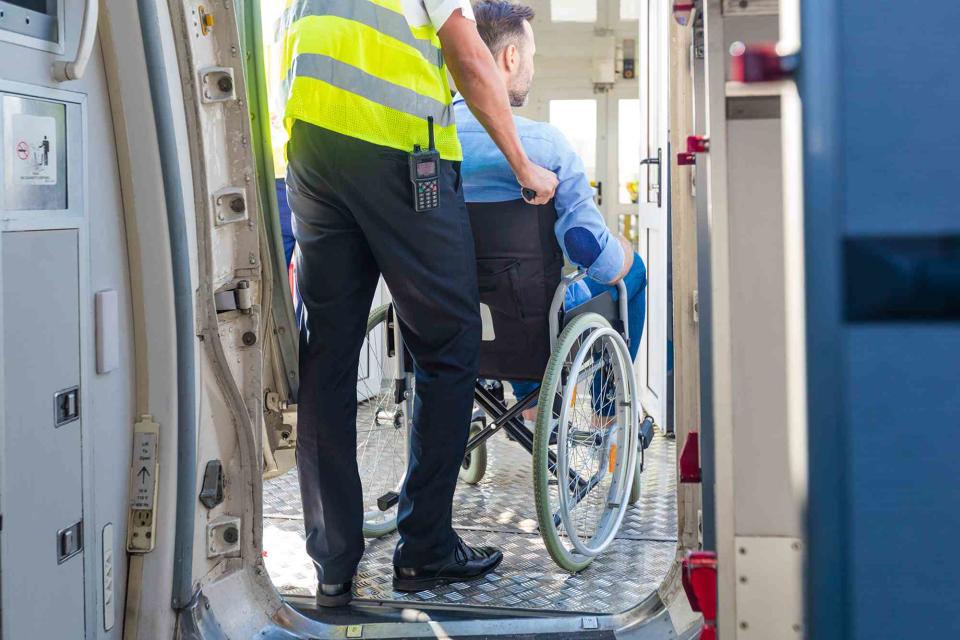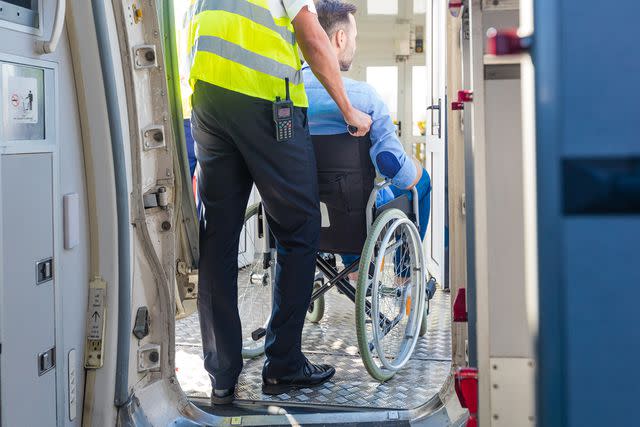U.S. Finalizes Rule to Make Single-aisle Airplane Bathrooms Wheelchair Accessible
Airlines will be required to add accessibility features on all new single-aisle planes delivered in three years.

izusek/Getty Images
The Department of Transportation (DOT) will require bathrooms in new single-aisle aircraft to be wheelchair accessible, in a new rule finalized Wednesday.
The ruling will require bathrooms on any new single-aisle aircraft with 125 seats or more to be larger and wheelchair-accessible and include features like grab bars, accessible faucets and controls, and accessible call buttons and door locks, according to the DOT. Airlines won’t be required to retrofit existing aircraft, but will have to add accessibility features if a lavatory is replaced.

izusek/Getty Images
“Traveling can be stressful enough without worrying about being able to access a restroom; yet today, millions of wheelchair users are forced to choose between dehydrating themselves before boarding a plane or avoiding air travel altogether,” Transportation Sec. Pete Buttigieg said in a statement. “We are proud to announce this rule that will make airplane bathrooms larger and more accessible, ensuring travelers in wheelchairs are afforded the same access and dignity as the rest of the traveling public.”
The rule will go into effect for new planes ordered within 10 years or delivered in 12 years. Airlines will be required to add accessibility features on all new single-aisle planes delivered in three years.
The rule noted that while some single-aisle aircraft do have large enough bathrooms, “the vast majority of aircraft lavatories are too small to accommodate on-board wheelchairs or attendants.”
The DOT noted accessible lavatories have been required on twin-aisle aircraft for years.
In addition to upgrading the lavatories, airlines will be required to train crew annually on how to stow wheelchairs and assist passengers to and from the bathrooms.
The new rules come a year after the DOT published the first-ever bill of rights for airline passengers with disabilities, which outlined basic rights like airlines not refusing transportation due to a disability.
Some airlines have also taken it upon themselves to make traveling with a disability easier. United Airlines on Thursday told Travel + Leisure it has added Braille to about a dozen of its planes on both individual rows and seat numbers as well as inside and outside the lavatories. The airline hopes to retrofit its entire mainline fleet by the end of 2026.
“Finding your seat on a plane or getting to the restroom is something most of us take for granted, but for millions of our customers, it can be a challenge to do independently,” Linda Jojo, the executive vice president, chief customer officer for United, said in a statement provided to T+L. “By adding more tactile signage throughout our interiors, we’re making the flying experience more inclusive and accessible, and that’s good for everyone.”
And last month, Delta Air Lines unveiled a new seat prototype to allow travelers who use a powered wheelchair to remain in their own wheelchairs during flights.
For more Travel & Leisure news, make sure to sign up for our newsletter!
Read the original article on Travel & Leisure.

